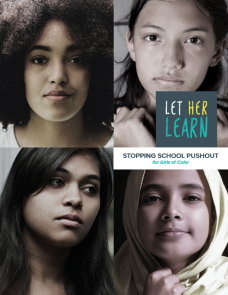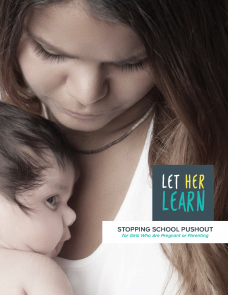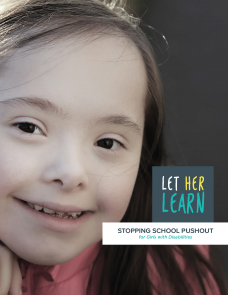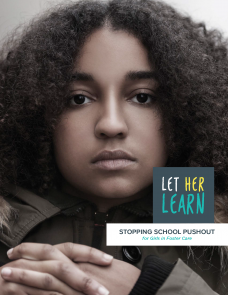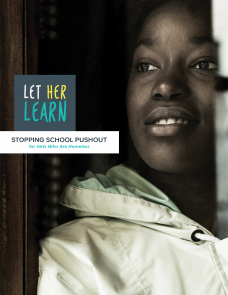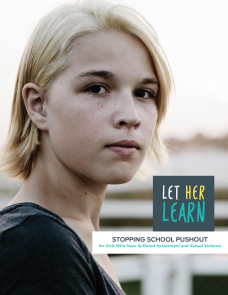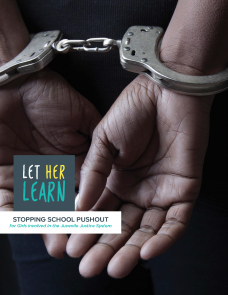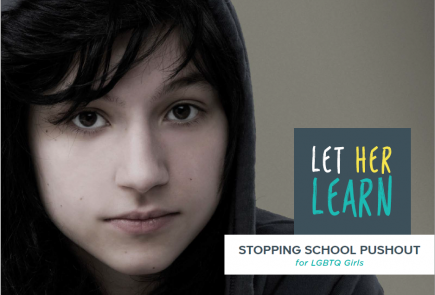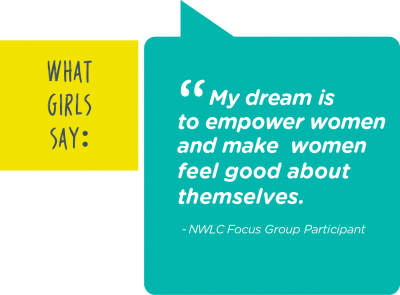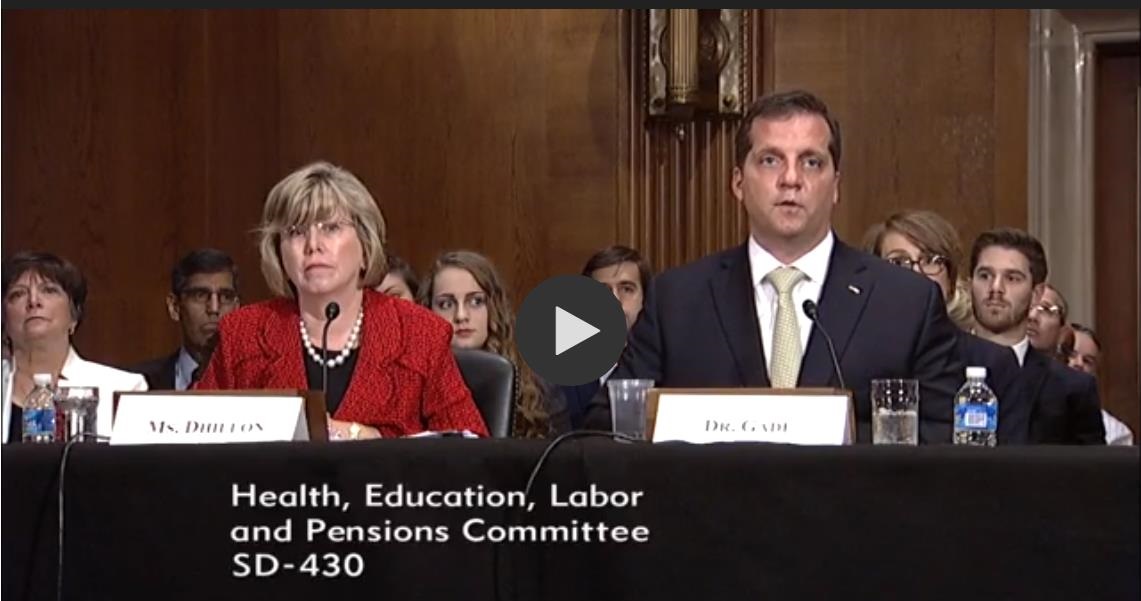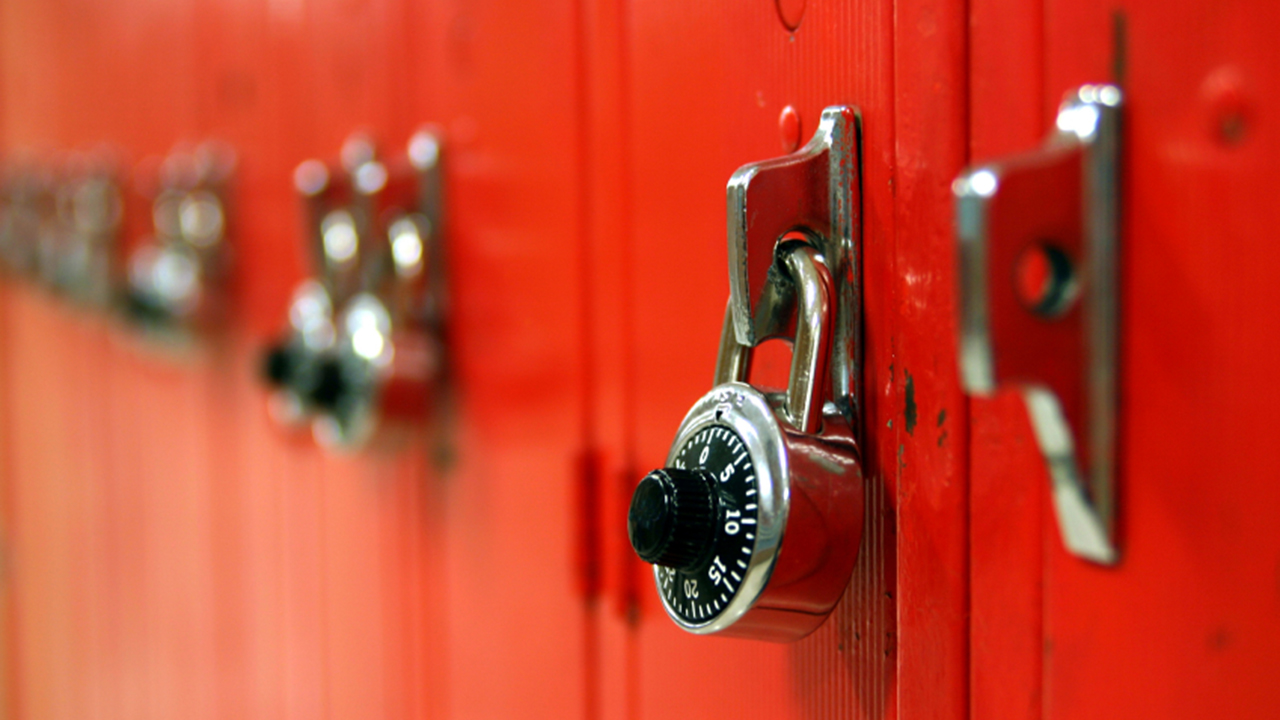Abortion rights, women of color, and LGBTQIA+ people are under attack. Pledge to join us in fighting for gender justice.
Four Ways Educators Can Let Her Learn
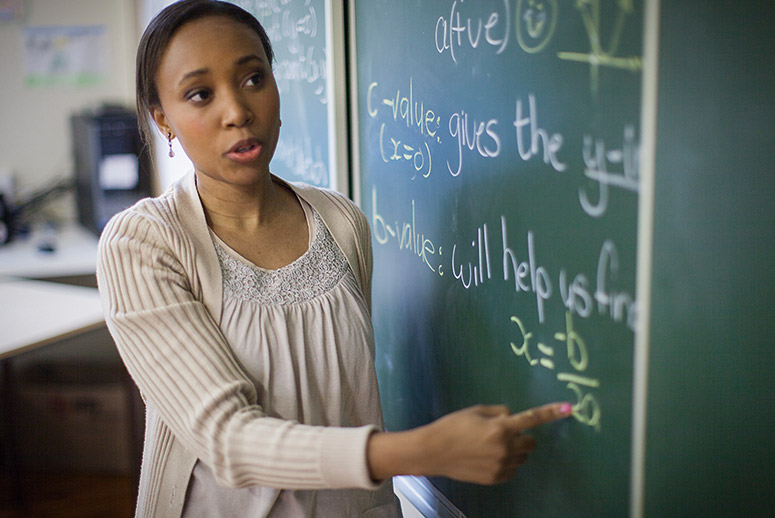
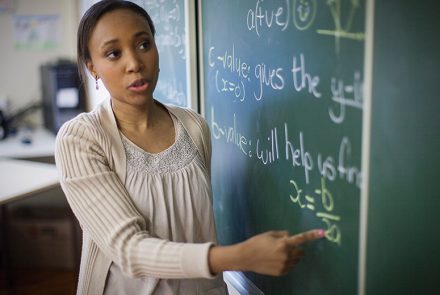
Educators usually have the best intentions. Most teachers and school leaders don’t spend time, energy, and money on an education degree for the express purpose of pushing girls out of the classroom. Most people don’t set out to intentionally make life harder for pregnant and parenting students, or to stymie girls dealing with homelessness or life in foster care, or to neglect LGBT students, or to further traumatize survivors of sexual harassment and assault.
Yet despite most educators’ best intentions, all of this and more is happening in schools all across America. As we found in our recent reports, many of our most vulnerable girls are being pushed out of school instead of getting the help they desperately want and need to succeed.
As people who dedicate their lives to serving students, it’s so important to make sure your actual impact on students aligns with your intentions for your work with them. With that in mind, here are four ways to get started and Let Her Learn.
Stay curious about students’ behavior. All behavior is communication. Often, beneath even the most trying, aggravating behavior, is a serious unmet need. As you probably know from experience, and as we detail in our reports, a stunning number of girls today are struggling with the kinds of traumatic experiences that would devastate most adults.
Unfortunately, while it’s easy to jump to conclusions about students’ behavior, labeling and punishing so-called “problem” students often does more harm than good. The girl who just got in a fight might be defending herself against sexual harassment you weren’t aware of. The girl who snapped at you in homeroom might not have slept well in days because she feels unsafe in the homeless shelter she’s staying in right now. The girl who gives you an “attitude” every day may not know how to connect with adults because she’s been abused in the past, and moves around a lot within the foster care system.
Students like these are capable of achieving great things. But they need patience and empathy far more than they need punishment and exclusion. Remember: there are no “problem children,” only children with problems. Taking a moment to try to understand why they’re behaving the way they are doesn’t mean letting them off the hook if they’re doing something wrong or even dangerous. But it often means pausing to learn more about the situation before rushing to judgment, and questioning how you respond.
Reconsidering the scenarios above, you might ask yourself if both students involved in that conflict should be punished the same way, or does one need to be held accountable for harassment, while the other needs protection so she doesn’t feel like she has to fight back? Might those girls with “attitude problems” be better served by spending time talking to a guidance counselor instead of doing time in detention? It’s often easier said than done, but pausing to ask why a student is behaving a certain way can be the difference between getting the student the help they need to improve, and escalating a student conflict to the point where the student ends up reflected in these awful pushout statistics.
Rethink discipline. The word “discipline” descends from the Latin word disciplina, which means “instruction.” Yet when it comes to many adults’ approach to young people, discipline has come to mean something much narrower: punishment. But discipline strategies like suspension and expulsion exclude students, especially Black and Multiracial students, and students with disabilities, from classroom teaching and learning. That raises their risk for additional social and academic problems, as well as raising their risk of involvement in the criminal justice system.
Reimagining discipline not just as punishment, but as part of a broader, positive approach to building compassionate and engaging learning communities, is an important part of reversing devastating trends like the school-to-prison pipeline. There are better alternatives to exclusionary student discipline or involving police officers for ordinary student behavior problems, like positive behavioral interventions and supports (PBIS) and restorative approaches. It’s worth keeping an open mind to new approaches like these (and/or trying again with better professional development, if previous attempts haven’t caught on in your school) instead of holding on to strategies that we know fuel school pushout.
Rethink professional development. All of us have biases and other negative habits we need to unlearn. Unconscious biases, stereotypes, and mistaken assumptions about girls’ behavior and motivation often lead people, educators included, to unintentionally misinterpret or overreact to certain girls’ behavior, leading to the well-documented disparities in discipline and other student outcomes along lines of race and ability status found in our reports. Professional learning opportunities that focus on noticing and responding effectively to trauma, and which help people unpack biases and stereotypes that unconsciously affect their behavior, play an important role in ending school pushout.
If you’re a school or district leader who gets to decide what professional learning opportunities to require of classroom teachers, consider prioritizing professional development that focuses on trauma-informed teaching practices and countering unconscious bias. If you’re a teacher, consider asking for these kinds of courses. Or, consider building a professional learning network of your own, in your community or online, where you can connect with other educators who are trying to build positive learning environments for all students, not just those most like their teachers, or those who are easiest to teach.
Pledge to Let Her Learn. Educators have tremendous power and influence over students’ lives, so it’s imperative to use that power for good. If you don’t already, start looking at discipline statistics and other information in your classroom, school, and district, and commit to taking action if troubling patterns (like over-punishing Black, Native, or disabled girls) emerge. Reflect on your own practice as an educator, and consider how you can be a better ally to girls who are struggling in various ways. Connect with local and national organizations and campaigns that stand up for girls.
As we found in our survey, girls are incredibly resilient and hopeful for their futures as long as they have the right support. Be the kind of educator who offers that support, by taking the Let Her Learn pledge, and start having these necessary conversations with your colleagues.
For more detailed recommendations on how you can help various groups of girls, read the recommendations in each of our reports on stopping school pushout for:
